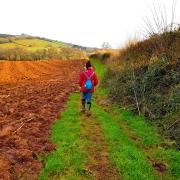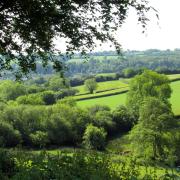It’s summer holidays, time to hit the beach and explore for wildlife. Rock pools are found all around the coast of Devon and offer a truly fascinating insight into the world beneath the waves.

The creatures found in a rock pool have evolved to a way of life so detached from our own that some of their physical adaptations are incredible. Consider a sea anemone. At low water if it becomes exposed to the air it remains closed, the combination of sea water contained within the body of the animal and a mucus layer on the outside of its skin prevent it from desiccating. When under water the anemone’s fatal good-looks become apparent, but the delicately formed and rather pretty tentacles are packed with poisonous stinging cells which are used to paralyse prey as large as a shrimp or small fish. Sometimes even crabs are taken.

Most creatures living in this turbulent environment have adapted strong muscles with which to hold fast onto the rocks whilst being battered by the waves. So synonymous is the limpet with holding fast that it has been embraced by us in our language to describe someone who is clingy or dependent. You may see that where limpets have taken up favoured positions on rocks there is actually a ‘homing scar’ which is exactly the same shape and size as the limpet’s shell. The limpet spends its submerged time grazing on seaweed and, before being left high and dry again, follows its own trail of mucus back to its base.

Limpets, barnacles and mussels have a hard shell but that doesn’t make them immune from predation. The dog whelk will drill a hole through the shell of a mollusc before injecting an enzyme to digest the unfortunate creature, a process which takes about half a day. The chowder is then sucked up by the hungry dog whelk.

Slightly more mobile and certainly a more prized catch to the average rock-pooler is the crab. Probably the most obvious feature of the crab is its hard exoskeleton which forms an excellent defence but makes growth rather more difficult. In order to increase in size the crab must shed every part of its rigid outer shell before hardening another layer underneath and when it does this it can grow back any legs that have been lost!

There are plenty of great places for rock-pooling in Devon but it’s hard to beat an organised ramble where you can learn lots of interesting facts. I can personally recommend Wembury Marine Centre, run by Devon Wildlife Trust.
To see more of David’s photography see davidchapman.org.uk



























